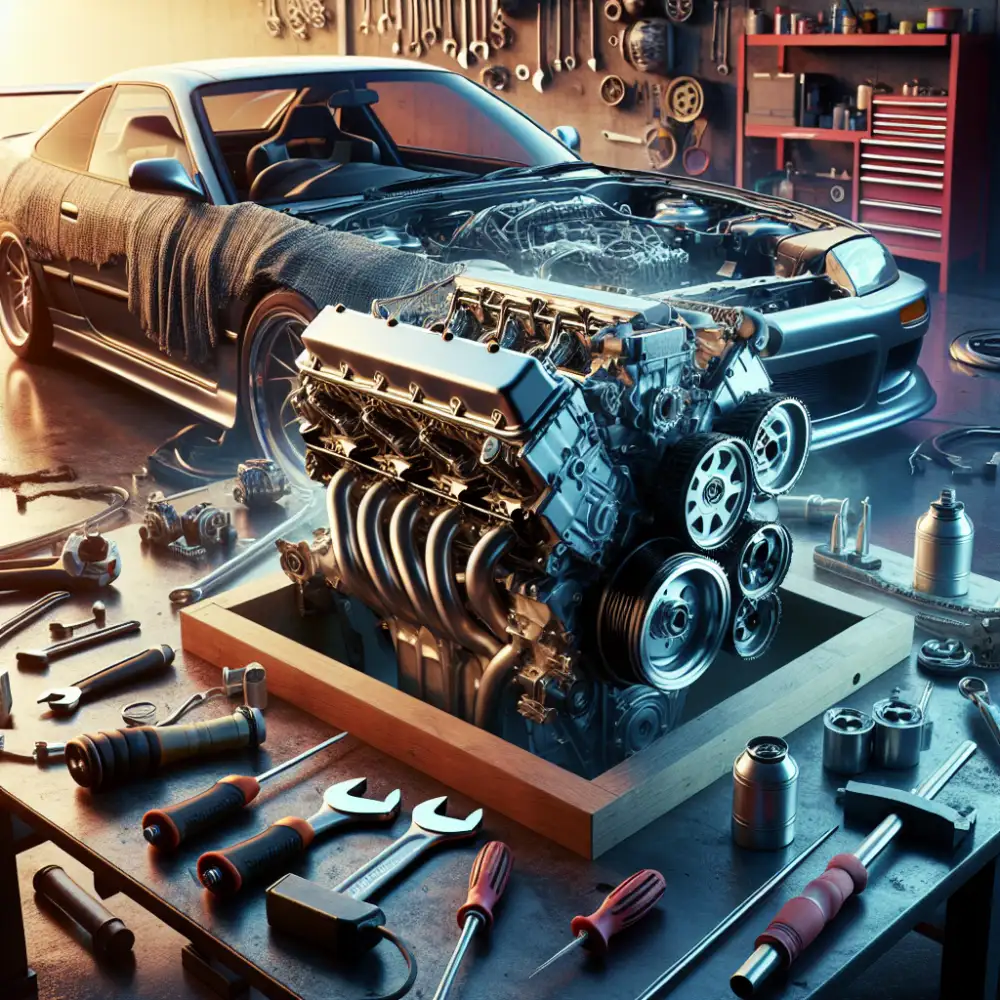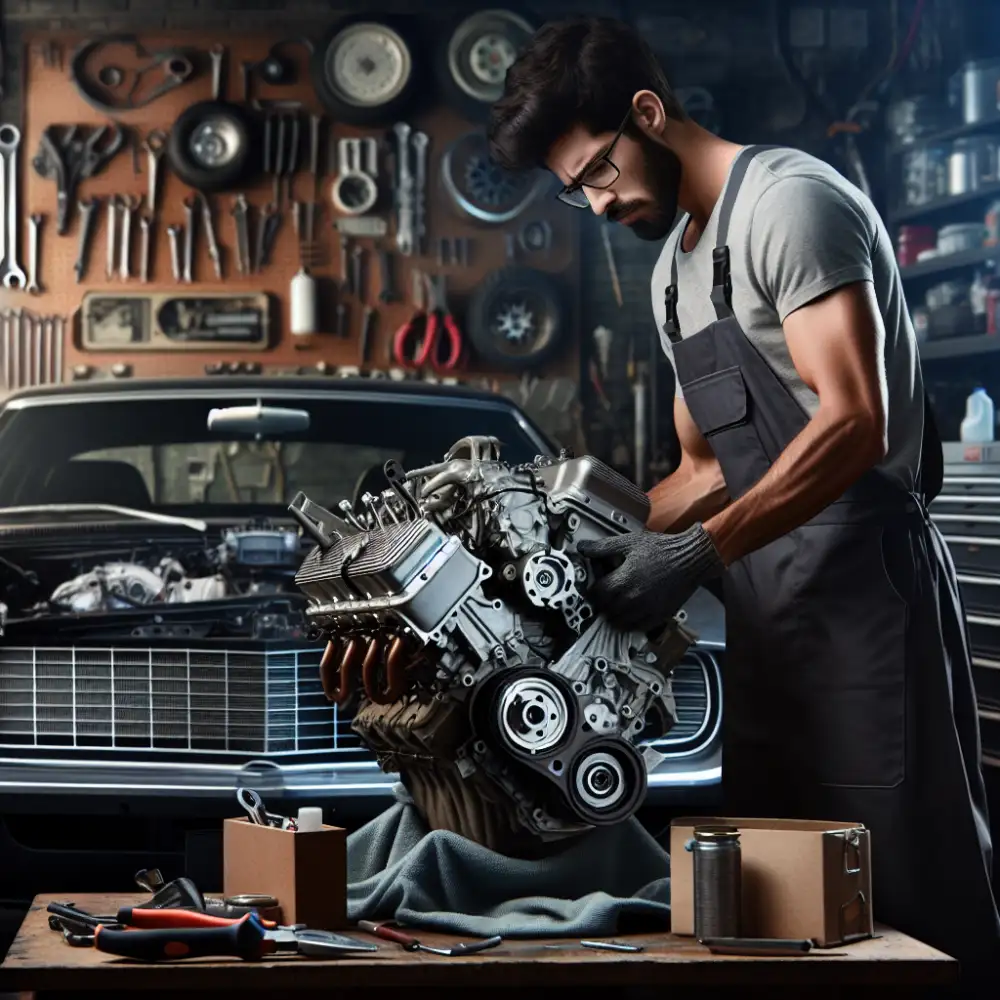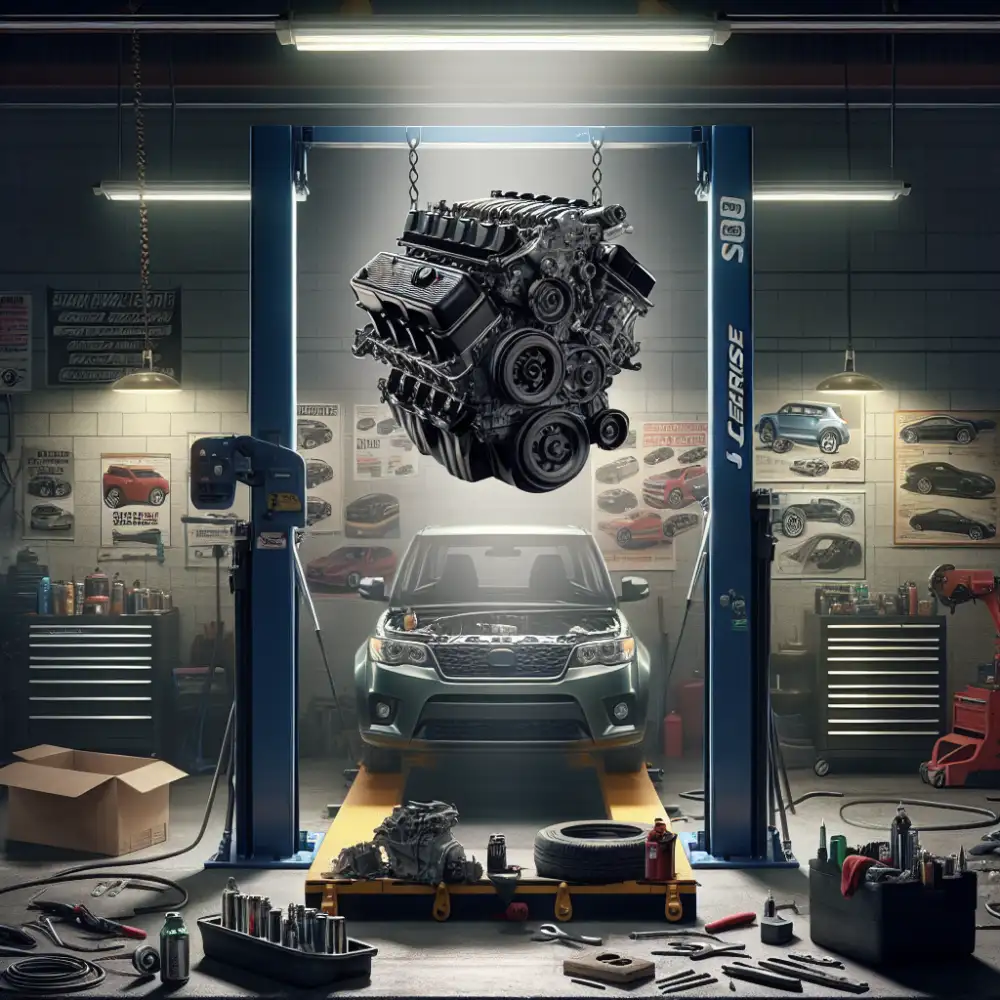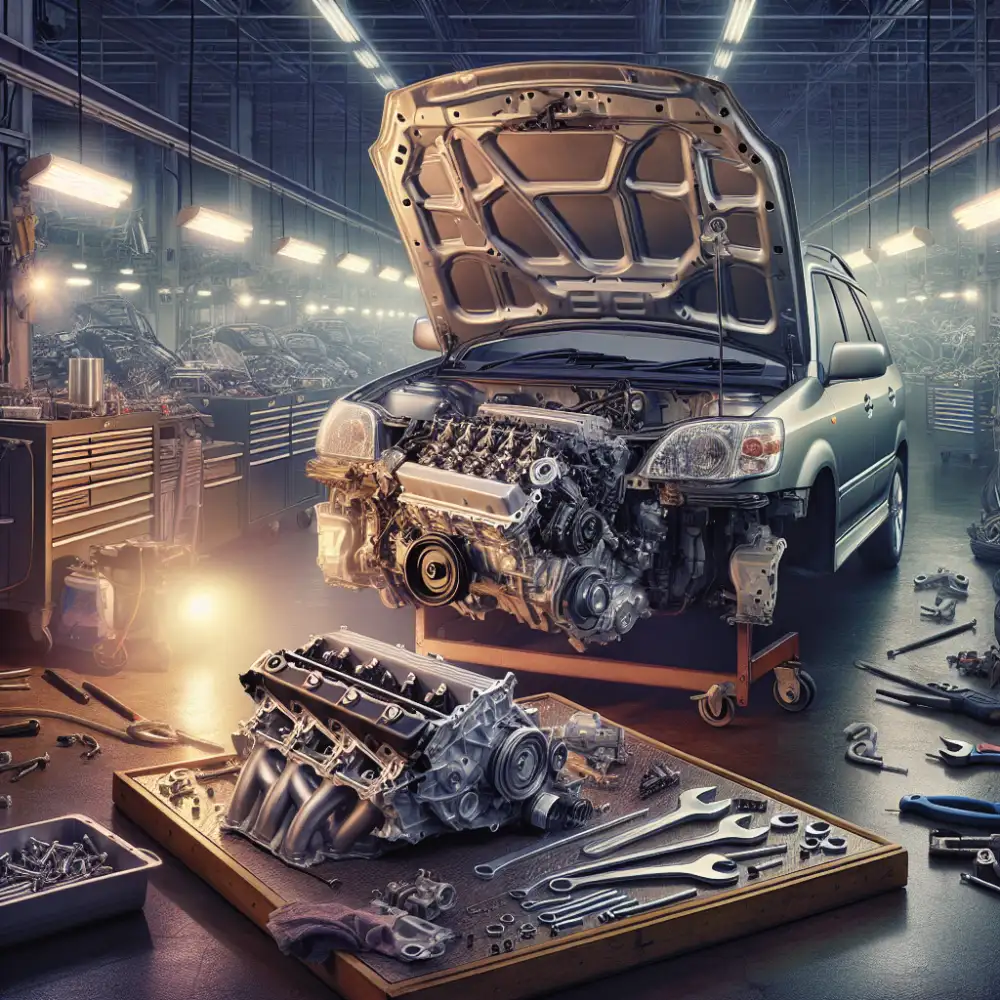J Series Swaps: Power Up Your Ride

- What is a J series engine swap?
- Why swap a J series engine?
- Popular J swap recipient cars
- J series engine variations
- Essential modifications for J swap
- Wiring and electronics considerations
- Fuel system upgrades
- Exhaust system compatibility
- Cooling system requirements
- Transmission and drivetrain options
- Cost of a J series engine swap
- Finding reputable J swap builders
- Legal aspects and regulations
- J series swap community resources
What is a J series engine swap?
A J series engine swap involves taking a J series engine, typically found in Honda cars, and installing it into a different vehicle. This swap is popular among car enthusiasts for several reasons.
J series engines, known for their reliability, are often more powerful than the engines found in older Honda models or other makes. This allows for a significant performance upgrade.
These engines are also relatively lightweight and compact, making them suitable for various car chassis. The abundance of aftermarket support for J series engines provides access to a wide range of performance parts and modifications.
However, it is not a simple engine swap. It requires extensive modifications to the vehicle's engine bay, transmission, wiring harness, and mounting points.
The complexity of this swap often necessitates custom fabrication and specialized knowledge. It is essential to carefully research and plan a J series engine swap to ensure compatibility and a successful installation.
Why swap a J series engine?
There are plenty of reasons why J series engine swaps have become increasingly popular. First, let's talk power. J series engines, particularly the J32 and J35 variants, offer a compelling blend of power and reliability. These engines, often sourced from Honda Odysseys, Acuras, and Pilots, can provide a healthy bump in horsepower and torque for a front-wheel drive platform.
Beyond the readily available power, J series engines are known for their durability. Their robust construction and Honda's reputation for engine longevity make them attractive for enthusiasts looking for a reliable powerplant. Parts availability is another major plus. With a vast network of Honda parts suppliers and a thriving aftermarket community, finding components for a J swap is relatively easy and often budget-friendly.
Finally, the compact nature of these engines, particularly when compared to some of their V6 counterparts, makes them surprisingly adaptable to a variety of engine bays. This means that with the right mounts and some fabrication, a J series engine can find a new home in a surprising range of vehicles.
Popular J swap recipient cars
The J series engine, produced by Honda, is a popular choice for engine swaps due to its potent power potential, smooth operation, and reliability. Let's dive into some of the most popular cars that enthusiasts choose for a J swap.
The Honda Civic, in its many generations, is a top contender. Its lightweight chassis and nimble handling characteristics are amplified with the added power of a J series engine. Another favorite is the Honda CRX. This compact coupe, known for its sporty heritage, becomes a true pocket rocket with a J swap.

Moving away from Honda's lineup, the Mazda Miata is a popular choice for J series swaps. Its front-engine, rear-wheel-drive layout, combined with its lightweight body, makes it an ideal candidate for a J series engine. For those seeking a more unique project, the Nissan 240SX is a solid option. This rear-wheel-drive platform, known for its drifting prowess, gains a new dimension of performance with a J series swap.
J series engine variations
The J series engine family offers a good amount of variety for swappers, each with its pros and cons. The J32A2, found in the Acura CL and TL Type-S, is a popular choice for its good balance of power and affordability. It's a 3.2-liter V6 known for its smooth power delivery and decent aftermarket support.
For those seeking more displacement, the J35A series, found in various Honda Pilots, Odysseys, and Acuras, offers a 3.5-liter option. These engines are known for their torque, making them suitable for heavier vehicles. However, they might require more fabrication for the swap due to their larger size.
If you're after maximum power, the J37A, found in the Acura RL and MDX Type-S, is the top dog. This 3.7-liter beast packs the most punch in the J series family. Keep in mind that this engine is less common and might be more expensive to source.
When choosing your J series engine, consider factors like your budget, power goals, and the specific requirements of your swap project. Research the specific engine code and its compatibility with your chosen transmission and vehicle platform.
Essential modifications for J swap
Swapping a J series engine into a different chassis opens up a world of possibilities but requires careful planning and modification. Here's a breakdown of essential changes.
Engine Mounts: J series engines have a different mounting configuration than most factory setups. Custom engine mounts are essential to securely position the engine and ensure proper drivetrain alignment.
Transmission Adapter: Unless you're sticking with a Honda transmission, you'll need an adapter plate to mate the J series engine to your chosen transmission. This ensures compatibility between the engine's output shaft and the transmission's input shaft.
Axles and Driveshafts: The increased power and torque of a J series engine might necessitate upgrading axles and driveshafts to handle the added stress. This prevents breakage and ensures reliable power delivery to the wheels.
Wiring Harness: Integrating the J series engine's electronics with your vehicle's electrical system requires a custom wiring harness or significant modification of the existing one. This ensures proper communication between the engine, sensors, and the vehicle's ECU.
Fuel System: J series engines often demand higher fuel flow than stock setups. Upgrading fuel pumps, injectors, and fuel lines ensures the engine receives an adequate fuel supply under all driving conditions.

Cooling System: Proper cooling is crucial for engine longevity. Upgrading the radiator, fans, and coolant hoses helps maintain optimal engine temperatures, especially under demanding conditions.
Exhaust System: A custom exhaust system is often necessary to accommodate the J series engine's exhaust manifold and catalytic converter placement. This ensures optimal exhaust flow and minimizes backpressure.
Intake System: A well-designed intake system is crucial for maximizing the J series engine's performance. This includes a high-flow air filter, intake manifold, and throttle body.
Wiring and electronics considerations
Swapping a J series engine into a chassis not originally designed for it brings a unique set of wiring and electronics challenges. The complexity largely depends on the base vehicle and the desired level of integration.
| Feature | JDM Honda B-Series Swap | J-Series Swap |
|---|---|---|
| Availability | Widely available, large aftermarket support | Less common, growing aftermarket support |
| Cost | Generally lower due to wider availability | Can be higher due to sourcing difficulties |
| Power Potential (Naturally Aspirated) | High, up to 200hp reliably achievable | Higher, up to 220hp+ reliably achievable |
| Torque Output | Generally lower, more focus on high RPM power | Significantly higher, known for low-end torque |
| Installation Complexity | Well-documented, many resources available | More challenging, often requires custom fabrication |
At a minimum, you'll need to merge the J series engine harness with your vehicle's chassis harness. This involves identifying and connecting essential circuits like ignition, starter, charging system, fuel pump, and sensors for oil pressure, coolant temperature, and speed.
If you're using the J series ECU, ensure compatibility with your vehicle's sensors. Some sensors might require adapters or modifications to function correctly.
For a cleaner swap, consider using an aftermarket engine management system. These offer greater flexibility in tuning and sensor calibration. However, they demand a deeper understanding of engine management principles.
Don't overlook the importance of a reliable wiring diagram for both the engine and your vehicle. This will save you countless hours of troubleshooting.
Lastly, pay close attention to grounding. A poorly grounded system can lead to erratic sensor readings and even damage to sensitive electronics.

Fuel system upgrades
When undertaking a J-series swap, upgrading your fuel system is non-negotiable. These engines are thirsty, and your old setup likely won't cut it. First on your list: injectors. Stock injectors from your donor car might work for basic setups, but for boosted applications or chasing big power, aftermarket high-impedance injectors are a must. Next up, fuel pressure regulator. You'll need an adjustable one to fine-tune fuel delivery alongside your new injectors. Don't forget the fuel pump. A higher-flowing fuel pump ensures your J-series gets a constant supply, preventing fuel starvation at high RPMs. Finally, consider upgrading your fuel lines and fittings. Larger diameter lines and high-flow fittings help maintain consistent fuel pressure and prevent restrictions. Remember, a well-designed fuel system is crucial for both performance and reliability. Don't skimp on this aspect of your J-swap!
Exhaust system compatibility
Exhaust system compatibility is a common concern for J-series swaps. The good news is that since J-series engines were found in a variety of Honda models, there are many OEM and aftermarket exhaust options available. However, direct bolt-on solutions are rare. The exhaust manifold or headers from the donor J-series engine often need modification to clear chassis components in the recipient car. Custom fabrication work might be necessary to create a proper downpipe that connects the headers to the rest of the exhaust system.
Consider these factors:
Ground clearance: Ensure the exhaust system, especially the downpipe, has adequate ground clearance to avoid scraping on speed bumps or steep driveways.
Exhaust system diameter: The diameter of the piping can affect exhaust flow and engine performance. Larger diameter piping generally improves flow but might require more extensive modification.
Catalytic converter compatibility: Factor in the location and size of catalytic converters for emissions compliance in your area.
Sound level: Different exhaust systems produce varying sound levels. Research and choose a system that aligns with your desired sound profile and local noise ordinances.
Remember that local laws regarding exhaust modifications vary. Always ensure your setup complies with regulations.
Cooling system requirements
When swapping a J series engine into a different chassis, the cooling system demands careful consideration. The J series, known for its robust performance, generates significant heat under load. Factory cooling systems designed for the original engine are often inadequate.
An aftermarket radiator with increased capacity is crucial. Look for a radiator with a dual-core design and a larger surface area for efficient heat dissipation. Upgrading to electric fans offers improved airflow compared to engine-driven mechanical fans, especially at low speeds. Ensure the fans have sufficient CFM (cubic feet per minute) to handle the J series' heat output.

The radiator hoses need to be compatible with both the J series engine and the chassis's radiator. Using high-quality silicone hoses with proper clamps ensures durability and prevents leaks under pressure. The coolant system's capacity might need an upgrade with a larger overflow tank. This accommodates the increased coolant volume of the larger radiator.
Don't overlook the thermostat. A lower temperature thermostat can help maintain optimal engine temperatures, especially during spirited driving or in hot climates. Remember, a well-designed cooling system is paramount for a reliable and powerful J series swap. It prevents overheating and potential engine damage, allowing you to fully enjoy the performance of your J series engine.
Transmission and drivetrain options
When considering a J-series engine swap, understanding your transmission and drivetrain options is crucial. The J-series engines were primarily paired with Honda's robust manual transmissions, like the 5-speed in the base models and the sought-after 6-speed found in performance trims. These transmissions are often preferred for their durability and direct feel. Adapting these transmissions to your swap car might require custom mounts, axles, and potentially modifications to the transmission tunnel.
While not as common, automatic transmission options are also available. Honda offered 4-speed and later 5-speed automatics with the J-series. However, these are generally less desirable for performance applications due to power limitations and potential reliability concerns under high stress.
Beyond the transmission, the entire drivetrain needs careful consideration. Depending on your chosen chassis and power goals, upgrading axles, differentials, and driveshafts might be necessary to handle the increased torque and power output of the J-series engine.
Remember that the specific transmission and drivetrain requirements will vary greatly depending on the J-series engine you choose, the car you're swapping it into, and your intended use. Thorough research and planning are essential to ensure compatibility and reliability.
Cost of a J series engine swap
The cost of a J-series engine swap can vary greatly depending on several factors. These include the specific J-series engine you choose, the car you're swapping it into, the parts you need, whether you do the work yourself or hire a mechanic, and your location.
Expect to spend anywhere from $1,500 to $5,000 or more for a complete J-series swap. The engine itself can cost between $500 for a used J32 to over $2,000 for a low-mileage J35.

Beyond the engine, you'll need to factor in the cost of a transmission, engine mounts, wiring harness, ECU, axles, and various other components. These parts can quickly add up, especially if you're buying new or upgraded parts.
Labor costs can also significantly impact the overall price. If you're not comfortable doing the swap yourself, expect to pay a significant amount for a mechanic to do the work.
While a J-series swap can be a rewarding project, it's essential to carefully budget and research before starting. Factor in the cost of all parts, labor, and potential unexpected expenses.
Finding reputable J swap builders
Finding a reputable shop or individual to perform your J swap is crucial to a successful project. This is not the time to skimp on research or go with the cheapest option. Start by tapping into the J series community. Online forums and social media groups dedicated to J swaps are invaluable resources. Ask for recommendations, read reviews, and look for builders with a proven track record of successful swaps.
When you've found potential builders, examine their portfolios. Have they done swaps on cars similar to yours? Do the finished projects look clean and well-executed? Don't hesitate to contact previous customers for their feedback. Once you've narrowed down your choices, have a detailed conversation with each builder. Discuss your vision for the project, your budget, and your timeline. A reputable builder will be transparent about their process, pricing, and any potential challenges specific to your swap. They should also be willing to answer your questions thoroughly and address any concerns you might have. Trust your gut feeling. If a builder seems evasive, unprofessional, or lacks knowledge, it's best to walk away. Remember, this is a significant investment, and choosing the right builder can make all the difference between a dream build and a nightmare project.
Legal aspects and regulations
Swapping a J series engine into a different car is a popular modification among automotive enthusiasts, but it's crucial to be aware of the legal aspects and regulations surrounding engine swaps. These regulations vary significantly depending on your location, so consulting with your local authorities and regulatory bodies, such as the Department of Motor Vehicles (DMV) or its equivalent, is essential.
Emission regulations are a primary concern with engine swaps. In many jurisdictions, swapping an engine for one from a different model year or vehicle can affect your car's compliance with emission standards. You might be required to ensure the swapped engine meets the emission standards of the vehicle's original model year or the current year, depending on local regulations. This might involve extensive modifications or the use of specific emission control components.

Safety regulations are another important factor. Engine swaps must not compromise the vehicle's structural integrity or safety features. This includes ensuring proper engine mounts, drivetrain compatibility, and the functionality of safety systems like airbags and anti-lock brakes. Failing to meet these safety standards can lead to vehicle inspections, fines, or even legal repercussions in case of an accident.
Registration and insurance are also affected by engine swaps. After completing an engine swap, you'll likely need to update your vehicle's registration documents to reflect the changes in the engine. Insurance companies also need to be informed, as the engine swap might affect your insurance premiums or coverage.
It's highly recommended to consult with qualified mechanics or automotive specialists experienced in engine swaps and familiar with local regulations. They can guide you through the process, ensuring your swap complies with all legal requirements and maintains the safety and roadworthiness of your vehicle.
J series swap community resources
The J series swap community is as diverse as the cars these engines end up in. Whether you're tackling the swap yourself or looking for a shop to handle it, numerous resources are available. Online forums dedicated to specific car models or swap types are treasure troves of information. You'll find seasoned veterans sharing their experiences, troubleshooting tips, and even detailed build threads documenting their entire swap journeys. Several Facebook groups cater specifically to J series swaps, offering a platform to connect with fellow enthusiasts, ask questions, and share progress updates. Beyond online communities, several reputable companies specialize in J series swap components and support. They offer everything from engine mounts and wiring harnesses to standalone engine management systems, making the process smoother. Some even provide comprehensive swap kits that include all the necessary parts, simplifying the sourcing process. Don't hesitate to tap into the knowledge and expertise of these companies for guidance and technical assistance.
Published: 03. 07. 2024
Category: Food



